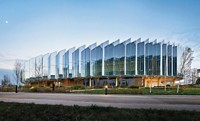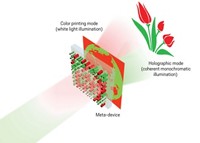Advertisement
Grab your lab coat. Let's get started
Welcome!
Welcome!
Create an account below to get 6 C&EN articles per month, receive newsletters and more - all free.
It seems this is your first time logging in online. Please enter the following information to continue.
As an ACS member you automatically get access to this site. All we need is few more details to create your reading experience.
Not you? Sign in with a different account.
Not you? Sign in with a different account.
ERROR 1
ERROR 1
ERROR 2
ERROR 2
ERROR 2
ERROR 2
ERROR 2
Password and Confirm password must match.
If you have an ACS member number, please enter it here so we can link this account to your membership. (optional)
ERROR 2
ACS values your privacy. By submitting your information, you are gaining access to C&EN and subscribing to our weekly newsletter. We use the information you provide to make your reading experience better, and we will never sell your data to third party members.
Biological Chemistry
Nature Inspires Building Design
Home for new biomedical institute in China will feature attributes of cells
by Sophie L. Rovner
August 15, 2006
| A version of this story appeared in
Volume 84, Issue 34

Architects sometimes turn to nature for inspiration, but their focus is generally on the macroscopic scale. The designers of a building that will house the new Institute for Nanobiomedical Technology & Membrane Biology in Chengdu, China, have turned instead to the microscopic scale: The building will incorporate many features inspired by cells.
Meeting areas whose windowed exterior walls bulge from the surface of the cell-shaped building will represent proteins in a cell membrane. An interior garden will include pools shaped like mitochondria and other organelles. And the building will contain a crystal-shaped lecture hall whose ceiling lights will be arranged in the crystal diffraction pattern of a protein. Construction of the $12 million building, which will include many other cell-like attributes, will start in 2007 or 2008 and will likely be completed by 2009.
The design is the fruit of a collaboration between Shuguang Zhang, associate director of the Center for Biomedical Engineering at Massachusetts Institute of Technology; MIT graduates Sloan Kulper and Audrey Roy; and architects at Tsinghua University. Zhang is founding adviser for the Chinese institute, which will be based at Sichuan University, where he earned an undergraduate degree in biochemistry.
Kulper was majoring in architecture at MIT when he took Zhang's course on the molecular structure of biological materials, which highlighted the parallels between architecture and biological structures. After Zhang became involved in the Chinese project, he sent Kulper and Roy—at the time a computer science and electrical engineering major—to Beijing for three months to collaborate with the Tsinghua University architects. "We worked with images of proteins, membranes, and organelles alongside photos and textbook images of glazing systems and cantilevers," Kulper recalls.
"Nature has produced abundant magnificent, intricate, and fine molecular and cellular structures," Zhang says. "If they can be amplified billions of times, as in a building, then these structures can be seen, touched, and admired. At that large scale, they can also be very educational." He hopes that this "first molecular bio-architectural design" will stimulate the creation of other buildings based on biological structures.







Join the conversation
Contact the reporter
Submit a Letter to the Editor for publication
Engage with us on Twitter